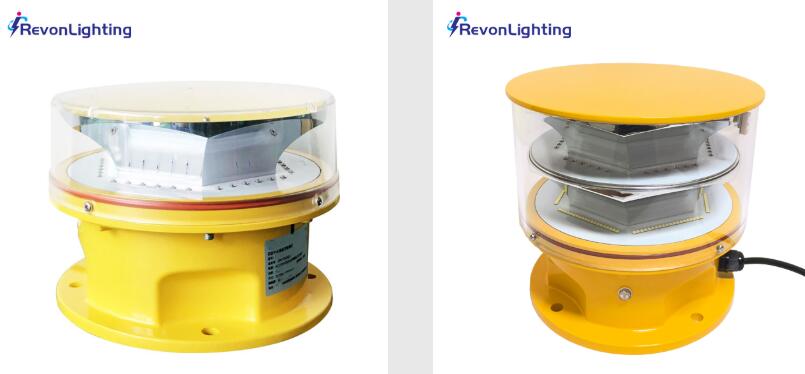In the vast and complex world of aviation, visibility is paramount. Aviation light bulbs serve as critical components in navigation, obstruction lighting, and runway illumination, ensuring safe operations in all weather conditions. This article explores the types, applications, technological advancements, and regulatory standards of aviation light bulbs, highlighting their indispensable role in modern aviation safety.
The Critical Role of Aviation Light Bulbs
Aviation lighting systems depend on high-performance aviation light bulbs to provide clear, consistent illumination. These bulbs are engineered to withstand extreme conditions, from freezing altitudes to scorching tarmacs, while maintaining reliability.
Key functions include:
Runway Lighting: Guides aircraft during takeoff, landing, and taxiing.
Obstruction Lighting: Marks towers, cranes, and buildings for collision avoidance.
Aircraft Navigation Lights: Ensures visibility to other pilots and air traffic control.

Without dependable aviation light bulbs, nighttime and low-visibility operations would be significantly riskier.
Types of Aviation Light Bulbs
Different applications require specialized bulbs designed for durability and performance. The most common types include:
1. Incandescent Bulbs
Traditional but gradually being phased out in favor of more efficient options.
| Aviation Light Bulbs |
Used in older runway and obstruction lighting systems.
2. Halogen Bulbs
Brighter and longer-lasting than standard incandescent bulbs.
Common in aircraft navigation and anti-collision lights.
3. LED Bulbs
The gold standard in modern aviation lighting.
Benefits:
Extremely long lifespan.
Low power consumption.
High resistance to vibration and shock.
Used in runway lights, taxiway signs, and obstruction beacons.
4. Xenon Strobe Bulbs
High-intensity flashes for maximum visibility.
Often used in aircraft anti-collision lights and tall obstruction markers.
| Aviation Light Bulb |
Regulatory Standards for Aviation Light Bulbs
To ensure safety and consistency, aviation light bulbs must meet strict international standards, including:
FAA (Federal Aviation Administration): Specifies brightness, color, and durability requirements.
ICAO (International Civil Aviation Organization): Sets global guidelines for airport and obstruction lighting.
EUROCAE (European Organization for Civil Aviation Equipment): Defines performance benchmarks for aviation lighting in Europe.
Non-compliance can lead to operational restrictions or increased accident risks.
Technological Advancements in Aviation Light Bulbs
Innovations continue to enhance the efficiency and reliability of aviation light bulbs:
1. Smart LED Systems
Adaptive brightness based on ambient light conditions.
Remote monitoring for instant fault detection.
2. Solar-Powered Lighting
Reduces dependency on electrical grids, ideal for remote airstrips.
Environmentally friendly with minimal maintenance.
3. Enhanced Durability
Vibration-resistant designs for high-stress environments.
Corrosion-proof coatings for coastal and harsh-weather airports.
4. Wireless Synchronization
Ensures runway and obstruction lights flash in unison for better pilot recognition.
Challenges and Solutions
Despite advancements, challenges persist in aviation lighting:
Heat Dissipation in LEDs: High-power LEDs can overheat.
Solution: Advanced cooling systems and heat-resistant materials.
Compatibility with Legacy Systems: Older airports may struggle to upgrade.
Solution: Retrofitting options that integrate new bulbs with existing fixtures.
Visibility in Extreme Weather: Fog, snow, and heavy rain can obscure lights.
Solution: Higher-intensity bulbs and optimized beam angles.
Future Trends in Aviation Lighting
The industry is evolving with cutting-edge developments:
Li-Fi (Light Fidelity): Using LED bulbs for high-speed data transmission between aircraft and ground systems.
AI-Powered Predictive Maintenance: Sensors detect bulb degradation before failure.
Energy-Harvesting Bulbs: Self-sustaining systems that generate power from ambient sources.
Aviation light bulbs are more than just illumination—they are a cornerstone of aviation safety. From guiding aircraft on foggy runways to marking towering obstacles, these bulbs ensure safe operations in all conditions. With advancements in LED technology, smart monitoring, and sustainable power solutions, the future of aviation light bulbs is brighter than ever.
By adhering to stringent regulations and embracing innovation, the aviation industry can continue to enhance safety, efficiency, and reliability in the skies. Whether on the ground or in the air, aviation light bulbs remain an essential beacon of security in the world of flight.